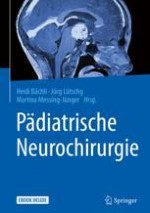Zusammenfassung
Das Auftreten von Hirntumoren im Kindes- und Jugendalter ist eng mit der Entwicklung des Zentralnervensystems verknüpft, während der viele unterschiedliche Zellpopulationen über einen gewissen Zeitraum anfällig für tumorauslösende Veränderungen sein können. Dies spiegelt sich in der enormen Vielfalt von Tumorarten wider, von denen einige häufiger, andere sehr selten auftreten und die oft eine umschriebene Altersgruppe betreffen. Das Spektrum reicht von benignen, langsam wachsenden bis hin zu hochgradig aggressiven Tumoren. Die Unterscheidung erfolgt bislang hauptsächlich nach dem histopathologischen Erscheinungsbild der Tumorzellen. In vielen dieser Tumorarten finden sich charakteristische genetische und epigenetische Veränderungen, die zunehmend Einzug in die Klassifikation finden, Aussagen über den Krankheitsverlauf zulassen und zielgerichtete Therapiestrategien ermöglichen. Die derzeitige Behandlung besteht in den meisten Fällen in der operativen Tumorentfernung und einer Kombination von adjuvanter Strahlen- und Chemotherapie.











